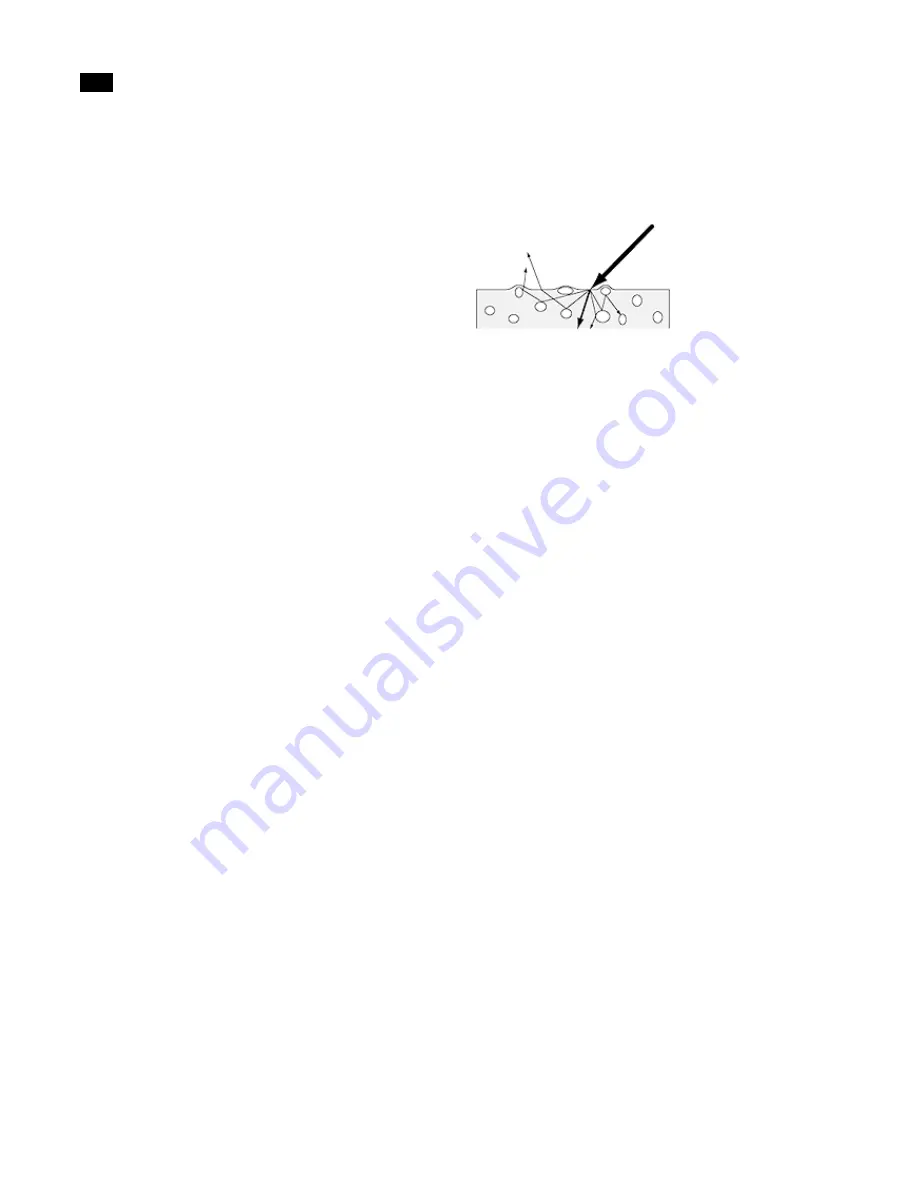
Reflection Models
D
304
Lightscape
For nonmetals, the color of the reflection at the inter-
face is the same as the color of the original light. For
metals, the reflection takes on the color of the metal.
However, as the angle of the light gets closer to
grazing, the reflection takes on less of this color and
more of the color of the light. In general, a surface
looks plastic if it has white highlights and metallic if it
has colored highlights.
Scattering in Materials
For metals, all light is reflected off the material-to-air
interface. Lightscape does not need to model light
entering a metal.
For nonmetals, how much of the light reaches the
interior of the material depends on the index of
refraction of the material and the angle at which the
light hits the material.
The higher the refractive index, the less light goes into
the interior of the material. If the index of refraction is
1, the material and the air appear the same to the light
and all of the light is transmitted into the material.
Most materials have an index of refraction between 1
and 1.5, the index for glass. By contrast, diamonds
have an index of refraction of 2.5.
When the incident light hits the interface at a perpen-
dicular angle, more light is transmitted into the
material. When it just grazes the surface of the mate-
rial, most of the light is reflected off the interface.
As light passes through the material, some wave-
lengths are absorbed more than others. As it hits small
particles inside the material, the light is scattered in
different directions. This is subsurface scattering.
Some of the scattered light leaves through the mate-
rial-to-air interface, some passes through the
material, and some is absorbed in the material.
Lightscape approximates the light that leaves the
material-to-air interface as
ideal diffuse
—that is,
uniform in all directions.
Transmitted Light
For metals, all light is reflected off the surface. Conse-
quently, Lightscape does not need to model light
going through a metal. For nonmetals, Lightscape
uses the transparency of the material to determine
how much light comes out the far side.
In reality, how much light and how it is transmitted
out the far side is quite complicated. Transmitted light
has the same components as reflected light. However,
in transmitted light, Lightscape does not account for
the diffuse components, only for the specular compo-
nents. Specular transmission, like specular reflection,
looks like what it is transmitting and goes all in one
direction. Any diffuse aspects are lost.
As a result, in Lightscape you can accurately model
the transmission of light through a stained glass
window, which is primarily specular transmission.
However, you cannot accurately model transmission
through tissue paper, since much of that transmission
is diffuse.
Subsurface scattering
Содержание LIGHTSCAPE
Страница 1: ...SULO 4 31 93 36034333308355 LJKWVFDSH...
Страница 18: ...NOTES 10...
Страница 110: ...NOTES 102...
Страница 136: ...NOTES 128...
Страница 166: ...NOTES 158...
Страница 176: ...NOTES 168...
Страница 202: ...NOTES 194...
Страница 210: ...NOTES 202...
Страница 248: ...NOTES 240...
Страница 294: ...NOTES 286...
Страница 308: ...NOTES 300...
Страница 316: ...NOTES 308...
Страница 324: ...NOTES 316...
Страница 342: ...Glossary 334 Lightscape...
Страница 360: ...Index ix 352 Lightscape...
Страница 362: ......
















































